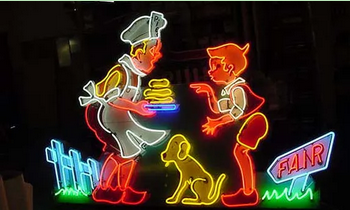
Neon signs revolutionized the art of displaying messages. They are known to create Las Vegas to life in the night just because they do a number of other establishments throughout the world. Even years after their invention, they still elicit interest and wander from onlookers.
If you're weighing the thought of buying neon signs, it's advisable that you've a proper understanding of them. It might assist saving you both time and money as you shop. Details including the differences between traditional neon signs and LED neon lights signs could also assist you to make a more informed choice.
With this at heart, let us delve into everything neon signs.
What're Neon Signs?
Neon signs are illuminated signs that display writings and symbols in numerous colors. Classic neon signs are manufactured using glass tubes full of inert gases such as for example neon and hence the name ‘neon signs '.
Who Invented Neon Signs?
Neon signs were invented by Frenchman Georges Claude in 1910. However, while his work was the ultimate breakthrough, the thought of neon lighting dates as far back because the 1800s. The following are some major milestones in the invention of neon signs.
1675: The discovery of the barometric light – the French astronomer, Jean Picard, pointed out that whenever mercury in a glass was shaken, it discharged some light. This phenomenon was christened barometric light. It pertains to neon signs on the principle that whenever certain atoms are activated in a machine, they can light up.
1855: The invention of the Geissler tube – Heinrich Geissler was a physicist and a glassblower. He invented the Geissler tube which is really a partially evacuated glass cylinder having an electrode on each end. His knowledge of molding glass also enabled him to craft different shapes. A Geissler tube filled up with inert gas and connected to an electric current might have worked as a neon light. The situation was that the glass tubes were only partially evacuated.
1902: The invention of the Claude System – the Claude system was invented by George Claude. It is a method of liquefying air that caused it to be possible to mass-produce purer forms of inert gases.
1910: The invention of neon lighting – using the Claude system and improved vacuum systems, George Claude created the very first successful neon light. His first display contains 40-foot neon tubes.
For more details please visit vintage neon clocks.
No comments:
Post a Comment